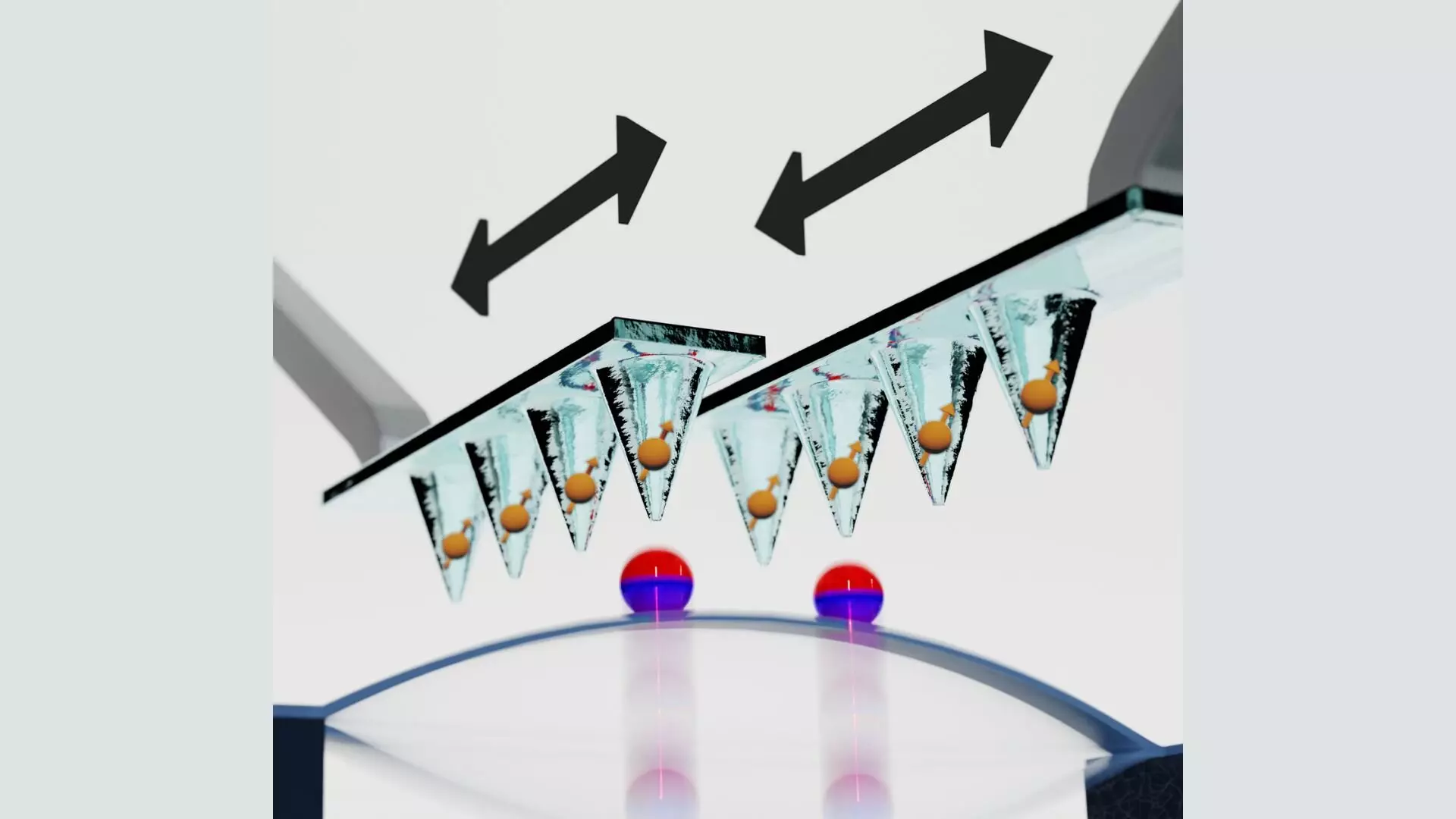Quantum computing stands poised to redefine our understanding of computation. Unlike classical computers that use bits as the smallest unit of data, quantum computers leverage qubits, which can exist in multiple states simultaneously. Yet, the development of robust quantum systems has been fraught with challenges, including the need for long coherence times, stability, and scalability. A recent study published in *Physical Review Letters* shines a light on promising innovations in the field, particularly through the coupling of solid-state spin qubits with nanomechanical resonators. This intersection of fields might hold the key to scaling quantum systems for practical applications.
The Limitations of Solid-State Spin Qubits
Solid-state spin qubits, particularly diamond-based nitrogen-vacancy (NV) centers, have garnered significant attention for their long coherence times, which allow for stable qubit operation. However, their scalability has long been a hindrance. As highlighted by the research led by Frankie Fung from Harvard University, current methodologies utilize magnetic dipolar interactions, which only have effective ranges of mere tens of nanometers. This inherent limitation complicates the fabrication of extensive qubit arrays, restricting researchers to small quantum registers. The implications of this constraint mean that while solid-state qubits are promising, their utility in large-scale quantum systems remains questionable.
The Innovative Proposal
The groundbreaking proposal from Fung and his team introduces an architecture that uses nanomechanical resonators to bridge the interaction gap between spin qubits. This mechanical oscillator concept represents a potential paradigm shift, where qubits are no longer limited by their immediate neighbors. Instead, the nanomechanical resonator mediates interactions at a distance, fostering a systematic approach to quantum operations that could include large-scale processors. Fung elaborates on the architecture by explaining how scanning probe tips embedded with NV centers can be maneuvered over a mechanical resonator, enabling a programmable means of connecting qubits.
Understanding the Mechanics of NV Centers
At the heart of this innovation are NV centers in diamond structures. These centers contain an unpaired electron—the source of their qubit capability—anchored in a tetrahedral carbon structure, which lends them unique optical and magnetic properties. When integrated into a nanomechanical system, NV centers can retain their advantageous characteristics, offering long coherence times and the ability to facilitate interactions via light inputs and outputs. The integration of these centers with nanomechanical resonators exploits their stability while circumventing the spatial limitations of traditional magnetic dipole interactions.
Mechanics of Interaction
In their proposed model, the coupling of NV centers with nanomechanical resonators allows for non-local interactions vital to quantum computing. This could be achieved through manipulations of the electron spin state by external magnetic fields generated by micromagnets situated on silicon nitride nanobeams. The mechanics at play suggest that the oscillation frequencies of the resonators can be altered based on the interaction state of the qubits. This alteration in frequency potentially sets the foundation for entangled states critical for advanced quantum operations.
To substantiate their theoretical model, the research team demonstrated coherence preservation through the mechanical transport of qubits, showing that qubit states remained intact despite moving through varying magnetic fields. The quality factor, a measure of the system’s efficiency, recorded values around a million, signifying a considerable level of coherence.
Future Prospects and Improvements
While the team acknowledges that current coupling strength still insuffices for the realization of their architecture, there remains optimism for future enhancements. Proposed advancements include the introduction of optical cavities to improve measurement precision and potentially facilitate information transfer between qubits and the mechanical resonator. The adaptability of nanomechanical resonators makes them suitable candidates for interfacing different types of qubits, opening avenues for hybrid systems that leverage the strengths of various quantum technologies.
The promise of this research does not simply lie in new architectures but in ushering a new era of scalable quantum systems. As the field moves toward integrating these resonators with existing circuits and technologies, the landscape of quantum computing could dramatically evolve—diminishing the barriers that have hindered its progression.
The synergy of solid-state spin qubits and nanomechanical resonators represents a transformative step toward achieving practical quantum computing. The ongoing research holds a profound potential to alter not just academic pursuits but also the societal implications of quantum technologies as they become more accessible and efficient. The path ahead is laden with challenges, but with continued innovation, the dream of a scalable quantum future looks increasingly viable.


Leave a Reply